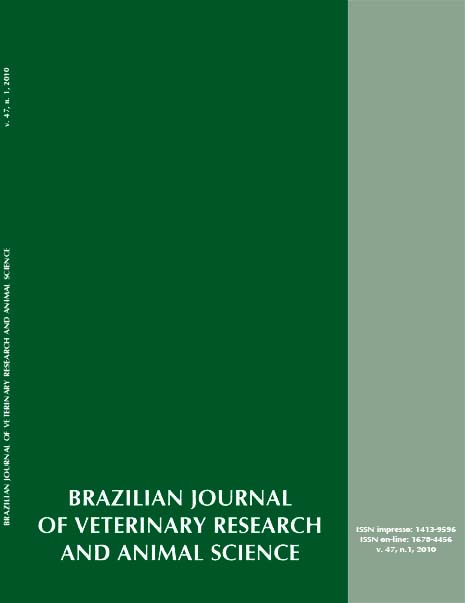Urinary excretion rate assessment by scintigraphy in domestic cats
DOI:
https://doi.org/10.11606/issn.1678-4456.bjvras.2010.26844Keywords:
Nuclear Medicine, Scintigraphy, Kidneys, FelineAbstract
In internal medicine of domestic cats, some imaging diagnosis modalities, such as ultrasonography, radiography and intravenous pylogram are spreadly used. Scintigraphy is a non-invasive technique, which provides functional information of individual kidneys; however, it is regarded not ordinary nowadays. The aim of this study was to verify the time of excretion of each particular kidney in domestic cats by scintigraphy, and these animals were presented with normal ultrasonographic and radiographic parameters. We used 15 cats, nine males and six females, and they were divided into awake and anesthetized cats. We calculated the time the radiopharmaceutical takes to reach the maximum activity in the kidneys (T max.) and the time it takes to decrease into half of this value (half-time). There was no difference between the awake and anesthetized cats, nor between the right and left kidneys, and no difference between male and female either.Downloads
Download data is not yet available.
Downloads
Published
2010-02-01
Issue
Section
UNDEFINIED
License
The journal content is authorized under the Creative Commons BY-NC-SA license (summary of the license: https://
How to Cite
1.
Jarretta GB, Bombonato PP, De Martin BW. Urinary excretion rate assessment by scintigraphy in domestic cats. Braz. J. Vet. Res. Anim. Sci. [Internet]. 2010 Feb. 1 [cited 2024 Jul. 26];47(1):13-22. Available from: https://www.revistas.usp.br/bjvras/article/view/26844





